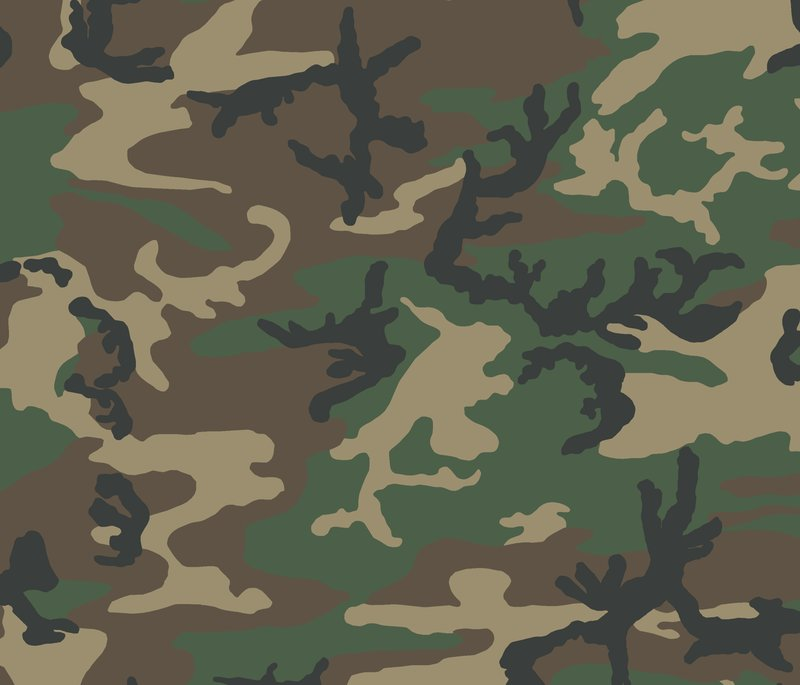Camouflage is the art of concealment that has been utilized by humans and animals for centuries. The purpose of camouflage is to blend in with the surrounding environment, making it difficult to be detected. Camouflage is used for a variety of purposes, from military operations to hunting, photography, and even fashion. In this blog post, we will explore everything you need to know about camouflage, including its history, types, benefits, and future.
What is Camouflage?
Camouflage is a technique used to blend in with the surrounding environment. It involves the use of colors, patterns, and textures that help an object or organism to blend in with the background. The goal of camouflage is to make it difficult for the observer to detect the object or organism.
Where is it Used?
Camouflage is used in various fields, including military operations, hunting, photography, wildlife observation, and even fashion. In the military, camouflage is used to make soldiers and equipment blend in with the surroundings to avoid detection. In hunting, camouflage clothing and equipment help hunters blend in with their surroundings, making it easier to approach game animals. Camouflage is also used in photography and wildlife observation to capture animals in their natural habitats without disturbing them. In fashion, camouflage prints are often used to create a stylish and trendy look.
How is it Used?
Camouflage is achieved by using different colors, patterns, and textures that help an object or organism blend in with the surroundings. In military operations, soldiers wear camouflage clothing and equipment that match the colors and patterns of the terrain they are operating in. In hunting, camouflage clothing and equipment are designed to match the colors and patterns of the vegetation and terrain where the game animals live. In photography and wildlife observation, camouflage clothing and equipment are used to blend in with the surroundings to avoid disturbing the animals.
The history of camouflage in military operations
The history of camouflage can be traced back to ancient times when hunters used natural materials, such as leaves and branches, to conceal themselves from prey. In the 19th century, the French army used a form of camouflage on their uniforms during the Franco-Prussian War. During World War I, both sides used camouflage extensively, with the development of new techniques and materials. In World War II, camouflage became even more important, with the development of specialized camouflage patterns and materials.
The first recorded use of camouflage dates back to the First World War when soldiers began painting their helmets and equipment to blend in with the surroundings. Over time, the use of camouflage in the military has evolved, and today, it is used in everything from clothing to vehicles and equipment.
One of the most common types of camouflage used in military and tactical clothing is mimetic camouflage. This type of camouflage involves matching the colors and patterns of the surrounding environment. Military personnel wear uniforms that match the terrain they are operating in, such as woodland or desert. The goal is to make the soldiers blend in with the surroundings and become more difficult to detect.
In addition to mimetic camouflage, military and tactical clothing also often use disruptive camouflage. This type of camouflage involves the use of irregular patterns and shapes to break up the outline of an object and make it harder to recognize. Disruptive camouflage is often used on vehicles and equipment to make them less visible from a distance.
What is Multi-Cam Camouflage?
MultiCam is a type of camouflage pattern used by military and law enforcement personnel. It was designed to be effective in a wide range of environments and lighting conditions, from woodland to desert and urban environments.
The MultiCam pattern consists of a mix of small and large, soft-edged pixels that blend together to create a natural-looking, organic pattern. The colors used in the pattern include tan, brown, green, and grey, which are blended together in a way that makes it difficult to distinguish individual shapes or patterns from a distance.
One of the key features of MultiCam is its ability to adjust to different lighting conditions. The pattern is designed to change in appearance depending on the angle and intensity of the light hitting it. This allows soldiers to remain effective and well-camouflaged in a wide range of environments, from bright sunlight to low-light conditions.
MultiCam was first introduced in 2002 and has since become a popular choice for military and law enforcement agencies around the world. It has been used extensively in Iraq and Afghanistan, as well as other conflict zones and training exercises.
What is Digital Camouflage?
Digital camouflage, also known as pixellated camouflage, is a type of camouflage pattern that uses small pixel-like squares to create a digital-looking pattern. The pattern is designed to break up the outline of an object and make it more difficult to detect from a distance.
Digital camouflage is often used in military and law enforcement clothing and equipment, particularly in urban environments. The pattern typically features a mix of colors, including shades of grey, black, and white, as well as some brighter colors like green or blue, to simulate the color palette of urban environments.
One of the benefits of digital camouflage is its ability to provide a consistent and repeatable pattern. The pixels used in the pattern are precisely placed and sized, which allows for more precise replication of the pattern across different materials and sizes of clothing and equipment.
Digital camouflage is also designed to be effective in a range of lighting conditions. The pattern's small, uniform squares can create an optical illusion that makes it difficult for the eye to focus on a specific object. This can make it more difficult for an observer to determine the size, shape, and distance of an object.
In addition to its military and law enforcement uses, digital camouflage has also become popular in civilian fashion and outdoor recreation. Clothing and equipment featuring digital camouflage are often marketed to hunters, hikers, and outdoor enthusiasts looking for durable, high-performance gear.
The main differences between MultiCam camouflage and digital camouflage are in their appearance and intended use.
MultiCam is designed to be effective in a wide range of environments and lighting conditions, from woodland to desert and urban environments. Its organic, soft-edged pixel pattern blends together to create a natural-looking pattern that is difficult to detect from a distance. MultiCam is often used in military and law enforcement clothing and equipment for a range of operations.
On the other hand, digital camouflage uses small, pixel-like squares to create a digital-looking pattern. It is often used in military and law enforcement clothing and equipment in urban environments, where it is designed to break up the outline of an object and make it more difficult to detect from a distance.
Pros of MultiCam:
- Versatile: MultiCam is designed to be effective in a wide range of environments and lighting conditions.
- Natural-looking: The soft-edged pixels and organic pattern create a natural-looking pattern that is difficult to detect from a distance.
- Proven effectiveness: MultiCam has been used extensively in military operations and has been shown to be effective in a range of environments.
Cons of MultiCam:
- Limited use in urban environments: While MultiCam can be effective in urban environments, it is not specifically designed for this type of environment.
- More expensive: MultiCam can be more expensive to produce than other types of camouflage patterns.
Pros of digital camouflage:
- Effective in urban environments: Digital camouflage is specifically designed to be effective in urban environments, where its pixel pattern can break up the outline of an object and make it more difficult to detect.
- Consistent pattern: The precise placement and sizing of the pixels in digital camouflage allows for more precise replication of the pattern across different materials and sizes of clothing and equipment.
- Cost-effective: Digital camouflage can be less expensive to produce than other types of camouflage patterns.
Cons of digital camouflage:
- Limited versatility: Digital camouflage is designed specifically for use in urban environments and may not be as effective in other types of environments.
- Less natural-looking: The pixel pattern of digital camouflage may look less natural than other types of camouflage patterns, which could make it more easily detectable in some environments.
When deciding which type of camouflage to use, the specific environment and lighting conditions should be taken into consideration. MultiCam is a good choice for environments that are more varied and may require versatility, while digital camouflage is a good choice for urban environments where its pixel pattern can be particularly effective. Ultimately, the choice of camouflage will depend on the specific needs of the mission or operation.

